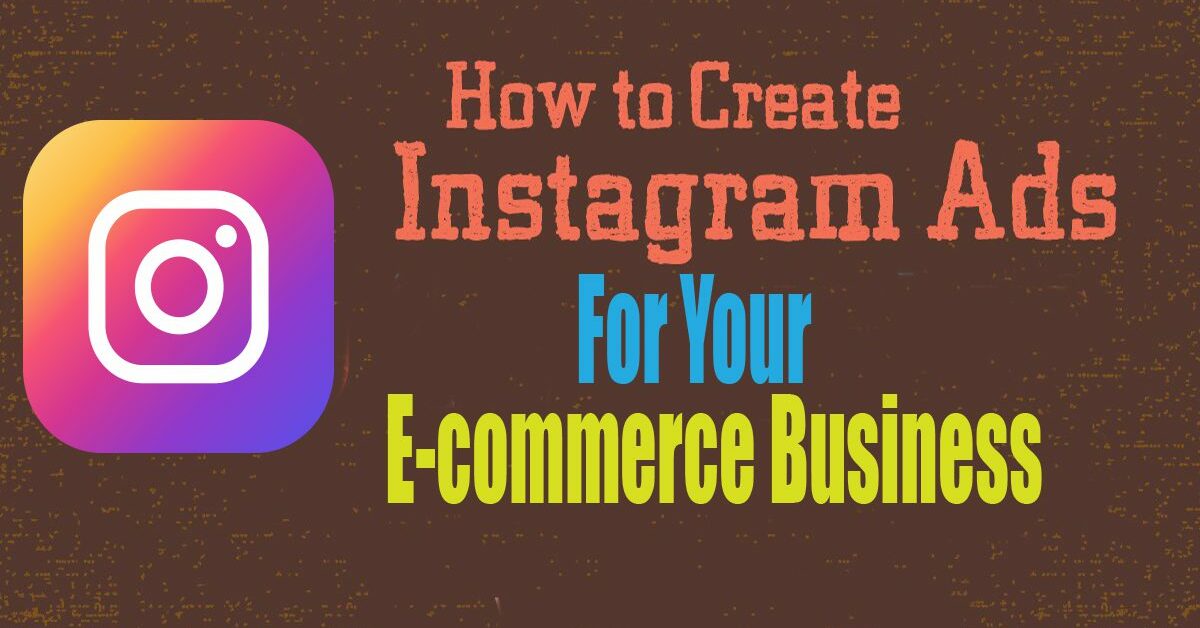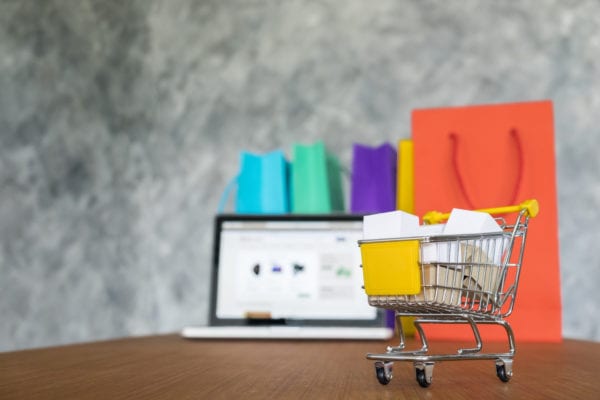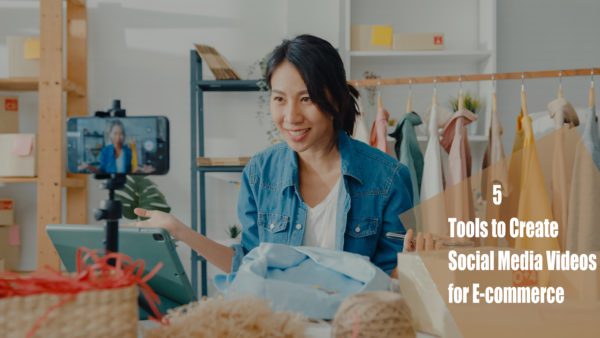Setting up an Instagram ad for your e-commerce business can help generate engagement around your brand and help you increase sales. Instagram is a social media platform with over 1 billion active users monthly.
It is a known fact that many people use Instagram to shop and browse new products. In a recent study, about 60% of Instagram users use the platform to discover new products. And what’s more impressive is that over 200 million visit business profiles every day. Furthermore, a recent study found that Instagram was the social media platform that most influenced people’s shopping behaviour in the fashion, beauty, and style-related industries.
Therefore, it would make sense to run Instagram ads for your e-commerce business to help connect users with your product and services.
In this blog post, we are going to show you how to set up an Instagram ad for your e-commerce business.
Table of Content
How much do Instagram ads cost?
Tips for Making Ads on Instagram
How to Set Up Instagram Ads for Your E-commerce Business
How To Set Visuals For Your Ads
What Are Instagram Ads?

Instagram ads are paid video or image posts created on Instagram by brands and businesses to promote the product or services they are selling or offering. They are videos or images that appear to your target audience when they use the application. For example, when they are browsing through your feed or products related to what you sell, they see a pop-up with a caption that tells them they are viewing an ad.
How do Instagram ads work?
Instagram ads, like Facebook ads, appear throughout the app, which includes users’ feeds, stories, explore, and more. They also contain CTA buttons, links, and a product catalogue.
When you want to set up an ad, Instagram will ask you some basic questions. You would have to determine your target audience, the type of format your ad will take, and your budget. After filling in that data, Instagram will use an algorithm to promote your ad.
Instagram also allows you to target the people you want to reach based on their interests, location, and other related demographics.
How Much do Instagram Ads Cost?
The price of Instagram ads depends on how much you want to spend. The bigger your budget, the more people you will reach. Ad cost can also depend on how expensive your product is. For example, if you are selling a $100 product, it’ll be less expensive than when you are selling a $1,000 product.
Furthermore, Instagram ads cost can also depend on your reach, competitiveness of your industry, time of year (during holiday shopping periods like Easter and Christmas) and placement.
According to research carried out by Revealbot shows the average cost of Instagram ads is:
- $1.17 cost per click (CPC)
- $7.01 cost per one thousand impressions (CPM)
Although the average cost-per-click differs by campaign objective. Instagram ad CPC can range between $.50 and $7.50, depending on your objective.
If you want to get good results with your ad campaign, you must focus on your target, industry and the type of ad you are using.
Type of Instagram Ads
There are many different types of advertising formats on Instagram, including:
- Photo ads
- Stories ads
- Video ads
- Carousel ads
- Collection ads
- Shopping ads
Image ads
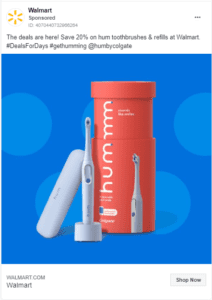
Image ads are a type of Instagram ad where businesses and brands use single images to advertise their brand, products and services. This can take a landscape or square format. Photo ads work best for campaigns with compelling visual content that can be conveyed in a single image. You can add text to images but make them short to achieve the best result. You can use Canva, Adobe Photoshop and Illustrator to design wonderful graphics for your product.
Video ads
Video ads are similar to image ads, in the sense that it allows businesses to use videos to advertise their brand, products, and services. And right now video is the most engaging form of content in the digital marketing world.
videos ads can be up to 60 seconds long and shot in landscape or square format. Make sure to use subtitles and simple language to pass the information across. You can also add links to your videos that will take your customer to a separate landing page. Remember to add thumbnails so that users who have the autoplay button off can still see your videos.
Carousel ads
Carousel ads are ads on Instagram that contain a maximum of 10 images or up to 3 videos within one ad which are strategically used by brands and businesses for enhanced storytelling. These ads give users more exposure to a product and services within one ad. Users can view ads by swiping through and they appear both in-feed and within Instagram Stories, with a call-to-action button or swipe uplink that lead users directly to your website.
Stories ads
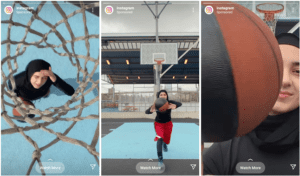
Instagram Stories ads is a recent type of ad on the platform that allows users and businesses to share self-explanatory videos and photos. Users engage more with Stories ads because the format covers the whole mobile screen and feels much more immersive than in-feed ads. Brands can also advertise on Instagram Stories with a photo or video content as well as features like filters, text, GIFs, and interactive stickers.
Collection Instagram ads

These ads are made up of a series of still images that play as a video, in the form of a slideshow. They are similar to video ads because they appear as videos in a user’s feed. You can add text and audio to your slideshow ads.
Collection ads work well with e-commerce brands because they allow users to purchase products directly from the ad. So when a user clicks an ad, they’re directed to a separate Instagram store where they can learn more about the product and proceed to purchase.
They are also good for e-commerce businesses because they showcase products directly from your product catalogue.
Shopping ads
Instagram has been heavily improving its e-commerce features over the years which was why they introduced the Instagram Shopping features. This feature allows users to view and purchase products without leaving the app.
Instagram Shopping ads take users directly to a product description page within the Instagram app. They can then purchase through your mobile website. To run Shopping ads, you need to set up your Instagram Shopping catalogue.
Tips for Making Ads on Instagram
To use Instagram ads to promote your e-commerce business, you will need the following:
- An e-commerce website or store
- An Instagram business account
- A Facebook business account (to give you more opportunities to make the best of your ads)
- Credit card to pay for the ads campaign
- A good image or video
- A social media manager/digital marketer that can help you set up and run the Instagram account.
- For your images, make sure you use high-resolution photos of your product. Don’t upload pictures or images that are blurred or of low quality (this is a turnoff to customers). You can use a professional photographer or your smartphone (iPhone or Samsung galaxy). Consider taking pictures in a light place (test run this to have the best resolution).
- Create more videos than images. Remember that Instagram business ads are more successful if they are uploaded as a video than as photos. You can create a GIF or a video of about 30 seconds in which you explain your products.
- Don’t cluster your image or video with too much information so your audience doesn’t get confused. Instead keep your image simple, straightforward and focused. Use different tools available on Instagram to make your ads more attractive.
- Clearly define your target audience. Advertise car accessories to people who have cars. The more your target audience is defined the more they will engage with your content. Study your audience, analyze their tastes and enter this data when you are creating your ad.
- Know your advertising goals. There are different types of advertising goals on Instagram like brand awareness, app installation, reach and much more. Although, the endgame about advertising your product is that you want more product sales. But this is not as easy as it seems. People don’t just see your products and start buying them immediately. You need to nurture your relationship with your audience and drive engagement, not just sales. This will help your business increase brand awareness, drive traffic and ultimately sell your products.
- Call to Action: Make sure you write a captivating call to action. Don’t assume people know what to do. Guide them and tell them the action you want them to perform when they see your ad. Research your competitors, to get inspiration on what you can write.
- Team up with industry or niche based influencers: Work closely with influencers whose followers are large and engaging. choose those whose audience might be interested in your products.
- Promote posts with product tags and website links: This will help simplify the process of checking a product and buying which can have a positive impact on sales. A website link can also provide customers with more information about your product and also drive meaningful traffic to your website.
- Make sure you engage with your audience. Constantly engage your audience when they comment under your Instagram ads. You can make use of Hootsuite or Buffer to manage this engagement so you won’t miss a single notification.
- Write a text that explains what you are selling pleasantly and attractively. Make use of subtitles in your videos and create thumbnails for those that have their autoplay turned off.
How to Set Up Instagram Ads for Your E-commerce Business
Setting up Instagram ads for your e-commerce business doesn’t have to be difficult. All you have to do is know your campaign objectives, your target audience, have an Instagram business account, a Facebook business account and you are good to go.
To set up your Instagram account, head to Facebook ads manager to get the most out of Instagram’s extensive ad targeting, creative, and reporting abilities. (remember that Facebook owns Instagram).
This guide will help you set up your Instagram campaign for your e-commerce Business
1. Choose your objective
The Instagram Ads/Facebook Manager provides you with various marketing objectives in three categories for which you can run campaigns. They include:
- Brand Awareness: This objective allows you to increase your brand or product awareness. Instagram shows your ads to people who might be interested in your type of product or services based on their preferences.
- Reach: This objective shows your ads to as many people as possible within your targeted audience. This is unlike brand awareness which shows your ads to people that are interested in your ads.
- Traffic: This sends people to your website or app. So if you want to generate traffic to your e-commerce site this ad is for you. You can choose a website, messenger, or app installs as the destination.
- Engagement: This ad type increases comments, likes, shares, event responses, and offer claims on your ad.
- App Install: You can send people directly to your app page to allow them to download your app.
- Video Views: This allows more people to view your videos.
- Lead Generation: You can use lead generation ads to collect relevant information like email sign-ups from potential leads.
- Conversion: With this objective, you can drive sales or sign-up conversions on your website or app. Although you would need to install a pixel to help track conversion.
After you have selected your objectives, you will be asked to name your campaign. You can name it based on the campaign objective for easy tracking of your campaigns.
2. Choose your budget and schedule
After you have chosen the type of campaign you want to run, it is time to choose how much you want to spend on your campaign.
There are two options you can choose from;
Daily budget: Daily maximum spending which is useful for always-on ads.
Lifetime budget: This allows you to set a maximum spend for your whole campaign, useful for ads with a clear end date.
There is also an option for scheduling ads. For example, you can choose to run ads continuously or only at certain times of the day. Although running ads at all times is more preferable, you can also choose to run ads at some certain period of the day when you know your audience is most active and will likely see your ads campaign.
Note that Instagram will provide you with an Audience Definition and Estimated Daily Results as you adjust your budget to give you an idea of the expected reach for your chosen budget. Try to choose settings so that your ad set falls in the middle of the green range.
3. Identify Your Audience
After you have finished with your budget, the next is to identify your target audience. The Instagram Ads/Facebook Manager either gives you the option create a new audience or use an already saved audience.
If you have an already saved audience based on website visitors or past audiences from previous campaigns that performed well, you can upload it directly to the platform. Or you can create a new one based on demographics, interests, and behavioural targeting.
To create a new list you can;
- You can upload your Either list as a file (.txt or .csv) or copy and paste it in the content field.
- Then add a name and description for your audience.
- Make sure you preview the list and make any necessary corrections.
- Click and upload
4. Select Your ad Placements
In this section, you get to decide where your ads will appear. There are the Automatic Placements which shows your ad to your audience wherever they’re likely to perform best. And the Manual Placements where you can optimize where your ad will appear and not appear. You can also decide if you want If to show your ads only on Instagram and not Facebook or choose to run on both.
Ensure that your visual assets are optimized for each social media format.
5. Create Your ads
The next thing in this session is to create your ad. After you have linked your Facebook business page to your Instagram account you can go ahead and create your ad.
Here is a quick summary of what you need to do to get started
- Determine which Facebook advertising objective resonates with your business
- Go to Facebook Ads Manager.
- Click on “Create”
- Choose an objective that supports your business and get you the most result.
- Click “Continue”.
- Add details like the budget, target audience and schedule for your ad set.
- In the ad placements section, you can select “Edit Placement” and choose Instagram to have your ads show up only on Instagram or “Automatic Placements” to have it on Instagram and Facebook.
- Add details for your identity, format, and related links.
- Preview your ads and once everything looks good, submit for approval. Otherwise, go back and make changes.
- Once your ad has been approved, it will appear on Instagram.
6. Analyze and Optimize Your Instagram ads
After you have successfully launched your Instagram ads and it is up and running, you can monitor its performance and test run ideas to find the most effective messaging, creative, and targeting.
Ads Manager allows you to monitor your ad campaigns to know if they are achieving your ad objectives. You can edit your Instagram ads to further meet your campaign objectives by test running targeting parameters or viewing analytics for the performance of your ads.
Keeping tabs on likes, comments, and shares is important to your marketing success. Think about your campaign objectives and the metrics that will give you the most valuable information regarding how well you’ve achieved those objectives. When running Instagram ads, you have to focus on these goal-specific metrics like conversion rate, reach and referral traffic to know whether your efforts are generating orders or leads.
How To Set Visuals For Your Ads
About 98.8% of users access social media via a mobile device. Therefore you must design your visuals to fit mobile devices.
To ensure that your ads resonate with the mobile screen, you have to;
- Film your video in vertical form (9:16) as this is easier to crop to (4:5) than from landscape
- Reduce the amount of text in your ads
- Keep videos short
- Add large font sizes that are easy to read on mobile screens
- Add animations and motion graphics to videos to grab viewers attention.
Instagram Images(Landscape) Choose photos/videos.
- An image ad size of 1200 x 628 pixels
- Choose a resolution of 600 x 315 pixels.
- Image format should be either JPG or PNG.
- Upload an image not exceeding 30MB max.
- Use a character length of but 125.
Square image ad
- This type of image is recommended for portrait style images
- The image should be 1080 x 1080 pixels
- Resolution should not be less than 600 x 600 pixels.
Vertical format
- This is the most used image size which takes up the most space horizontally.
- Image ad size should be 1080 x 1350 pixels.
- The minimum vertical image ad size is 600 x 750 pixels.
Instagram Videos
Instagram Videos ad (Landscape)
- Use a minimum resolution of 600 x 315 pixels.
- Video must be in MP4 or MOV format
- Keep video length to 120 seconds.
Square Video ad Format
- For square video format use a minimum resolution of 600 x 600 pixels.
- The proper aspect ratio should be 1:1.
Vertical Image ad
- Image square ad size should be 1080 x 1350 pixels.
- The minimum vertical image ad size should be 600 x 750 pixels.
Conclusion
Instagram remains one of the most effective ways an e-commerce brand can market its products and services. However, Instagram marketing success depends on the marketing strategies and type of brand. What is working for some brands might not work for other brands. Therefore to get the most out of your ad campaigns, you must first study your brand and audience to run an effective campaign towards them.
Once your Instagram ads are up and running, you have to keep studying your metrics and insights regularly and see which kind of content works best and what you can do to improve them. As you keep on test running what campaign best achieves your goals, the more successful your campaign becomes.

